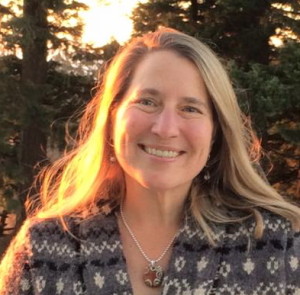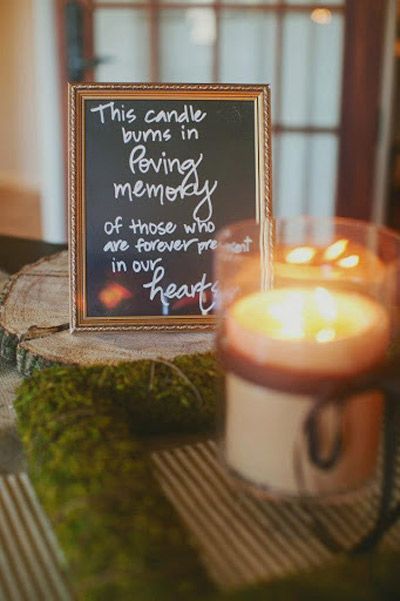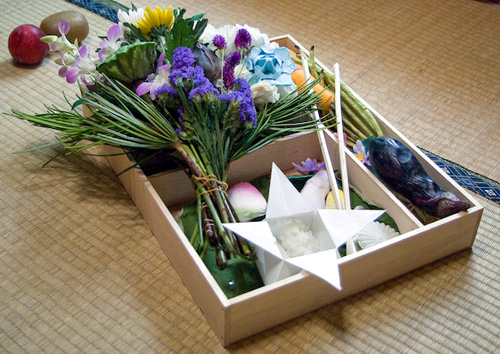Today SevenPonds shares part two of our conversation with Holly Pruett, a life-cycle celebrant based out of Portland, Oregon. (Read part one here.) Holly is a certified Life-Cycle Celebrant through the Celebrant Foundation and Institute. She helps her clients find a way of telling their stories at pivotal times in their lives through ceremony and ritual.
Juniper: How do you navigate intersectional and atheist beliefs around what honoring the beloved dead should or could look like?

Holly Pruett, life cycle celebrant
(Credit: deathtalkproject.com)
Holly: People will often say that funerals are for the living. And I appreciate that for people like my dad, who said he didn’t want a funeral, this is a kind of antidote –a way to validate what they want for themselves.
But I wonder, are they just for the living? Most cultures throughout time have held that we, the living, have a responsibility to the dead. And that has something to do with how we conduct ourselves. I don’t come with any of my own orthodoxy about how to do that. Nor do I want to dictate how it might look. But I think we’re orphaned at this time in the dominant culture, where the prevailing sentiment is, “It’s my life; it’s my death, and I’ll celebrate it how I please.” We haven’t had the opportunity to think about a bigger picture.
I’m wondering about these things myself. When I find clients who are open to wondering about them too, there’s a lot of richness that can come through an organic unfolding of ceremony. For those people who don’t want to explore that, or don’t feel capable of approaching what needs to happen at the time, then we do our best to meet their more immediate needs.
Juniper: Does part of the way that you serve people with ritual and ceremony include creating practices for people that they can do independently. For example, do you help create rituals to help families have an ongoing relationship with their loved one?
Holly: I try to support the development of a culture of remembrance within a family or community. This might include looking back into their own cultural heritage and family traditions to see what might be reinvigorated to create a contemporary ritual. That could be as simple as beginning a ceremony with the lighting of a memory candle and speaking the names of the ancestors who preceded the person being mourned. It might be the incorporation of family heirlooms, such as a quilt that had been made by someone in the family who has died in the distant past. We might also consider whether parts of the ceremony can honor the person’s birthday, the anniversary of their death and other times of remembrance. To follow the candle example, that practice might continue at other family gatherings, such as to mark an empty seat at the dinner table.

Credit: pinterest.com
When I work with families, we seek to find practices that resonate with them personally, and also to think backwards as well as forwards in time. I just worked with a woman whose deceased husband had been prominent in his community. There was a portrait of him hanging in a public place, and I wondered if bringing flowers to that portrait on an important anniversary might be a way to create an ongoing relationship to her husband. It might also form a connection to those people who would come by and see those flowers and realize that this person’s legacy was still serving the community.
Juniper: Do you find that your clients have an interest in their ancestry and family history sparked by the death of a loved one?
Holly: I think some do and some don’t. If we’re dealing with a sudden or traumatic death such as by suicide, or the end of an exhausting period of care giving, there are a lot of elements that can come to bear upon a family’s capacity to cope, including being internally divided among themselves. Different spiritual beliefs within a family are also a big presence in the process. So, there are times when ancestry becomes a natural opening point in understanding the death that’s occurred within the bigger story of the family. And at other times, there just isn’t room for that.
Juniper: As a celebrant, how do you navigate the differences in perspective among individuals in a group you’re serving — someone’s blood or chosen family? I mean differences such as worldview, how they want the ceremony to look or not look, as well as understanding the nature of the Great Mystery?

Credit: japanvisitor.com
Holly: My practice as a celebrant definitely bears the marks of our time. That is, we’re in a customer-satisfaction culture and a marketplace of ideas where anything goes, and we’re each the author of our own story. So, there are many ceremonies where there isn’t an overarching set of beliefs. They are not guided by something greater than the individual preferences of the people involved.
I differentiate between different kinds of ceremonies. I’ll help people put together a ceremony that comes out of a more intact culture, where individuals don’t make up their own ceremonies. But, given that we’re in the time we’re in, it’s sometimes necessary to create a dual context. For example, some family members who hold certain beliefs might offer a prayer coming from that position, while the overarching ceremony isn’t framed from that perspective. I aim to create hospitality for all the different pieces that are important to the people I’m working with, to give everyone a seat at the table. There are also times when that is not possible. In that case, we hold the ceremonies separately.
Juniper: Thank you for your work and insight. It was a pleasure chatting with you!
Holly: Thank you!

 How Can Ceremony and Ritual Ease Loss? An Interview With Holly Pruett: Part Two
How Can Ceremony and Ritual Ease Loss? An Interview With Holly Pruett: Part Two


 “Making Mobiles” by Karolina Merska
“Making Mobiles” by Karolina Merska
 “Hands Up to the Sky” by Michael Franti & Spearhead
“Hands Up to the Sky” by Michael Franti & Spearhead
 Coping With Election Grief
Coping With Election Grief














